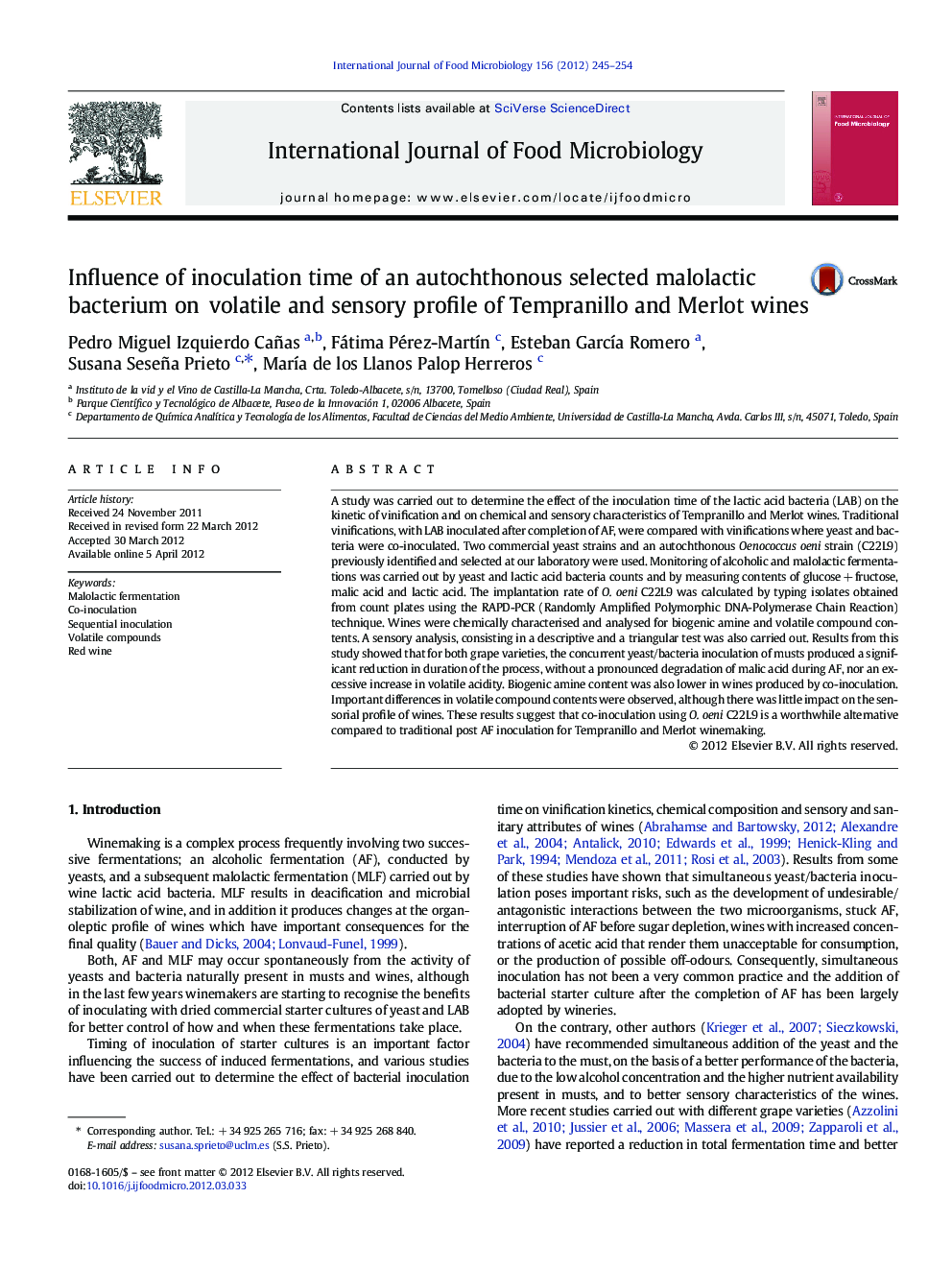| کد مقاله | کد نشریه | سال انتشار | مقاله انگلیسی | نسخه تمام متن |
|---|---|---|---|---|
| 4367492 | 1616645 | 2012 | 10 صفحه PDF | دانلود رایگان |

A study was carried out to determine the effect of the inoculation time of the lactic acid bacteria (LAB) on the kinetic of vinification and on chemical and sensory characteristics of Tempranillo and Merlot wines. Traditional vinifications, with LAB inoculated after completion of AF, were compared with vinifications where yeast and bacteria were co-inoculated. Two commercial yeast strains and an autochthonous Oenococcus oeni strain (C22L9) previously identified and selected at our laboratory were used. Monitoring of alcoholic and malolactic fermentations was carried out by yeast and lactic acid bacteria counts and by measuring contents of glucose + fructose, malic acid and lactic acid. The implantation rate of O. oeni C22L9 was calculated by typing isolates obtained from count plates using the RAPD-PCR (Randomly Amplified Polymorphic DNA-Polymerase Chain Reaction) technique. Wines were chemically characterised and analysed for biogenic amine and volatile compound contents. A sensory analysis, consisting in a descriptive and a triangular test was also carried out. Results from this study showed that for both grape varieties, the concurrent yeast/bacteria inoculation of musts produced a significant reduction in duration of the process, without a pronounced degradation of malic acid during AF, nor an excessive increase in volatile acidity. Biogenic amine content was also lower in wines produced by co-inoculation. Important differences in volatile compound contents were observed, although there was little impact on the sensorial profile of wines. These results suggest that co-inoculation using O. oeni C22L9 is a worthwhile alternative compared to traditional post AF inoculation for Tempranillo and Merlot winemaking.
► Presence of LAB strain from the outset allows a significant reduction of time.
► Concentrations of some biogenic amines are lower in wines produced by coinoculation.
► Numerous differences as regards to volatile compound composition are displayed.
► Impact of coinoculation on sensory profiles is limited.
► Coinoculation lends sanitary benefits over traditional vinification.
Journal: International Journal of Food Microbiology - Volume 156, Issue 3, 1 June 2012, Pages 245–254